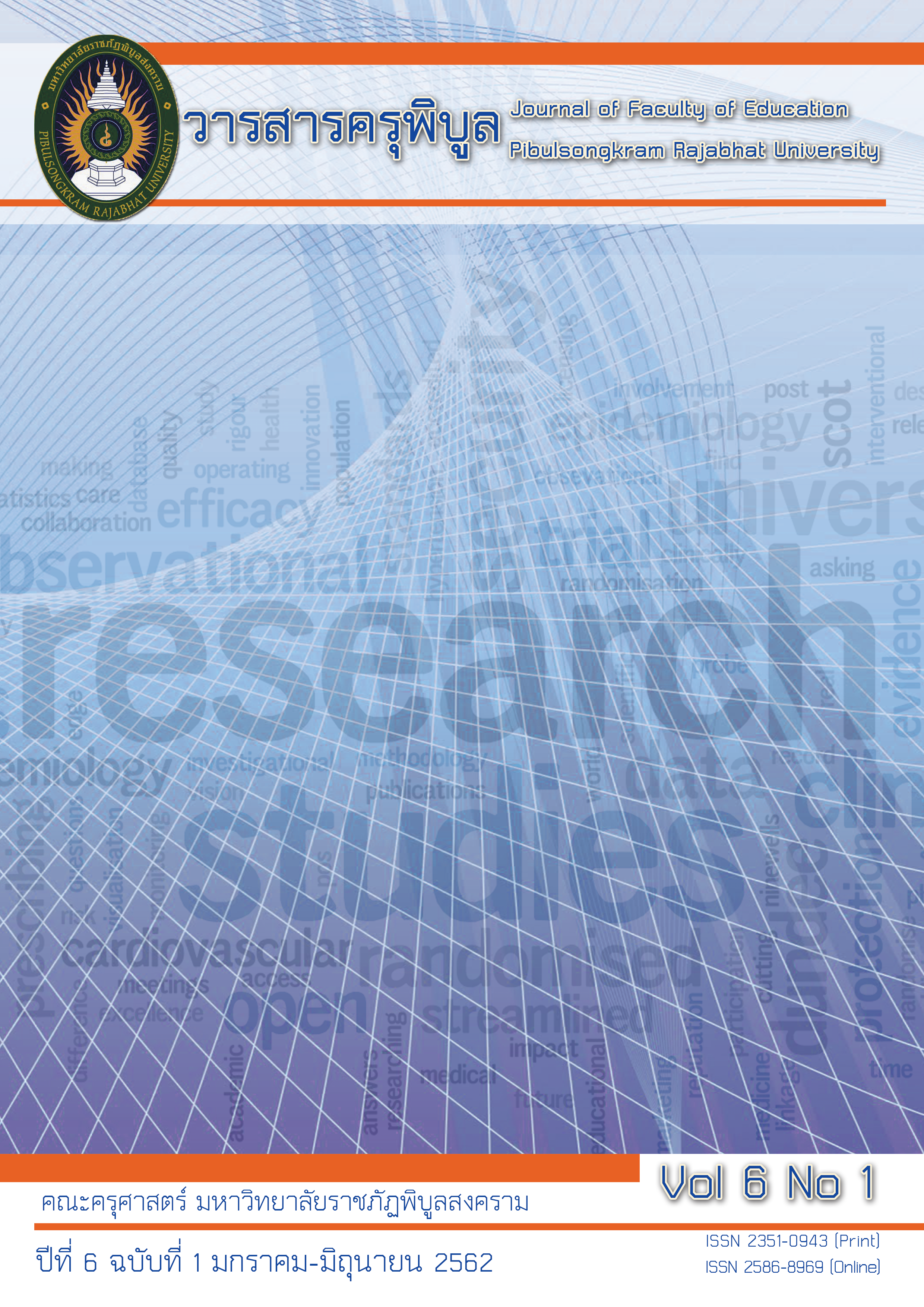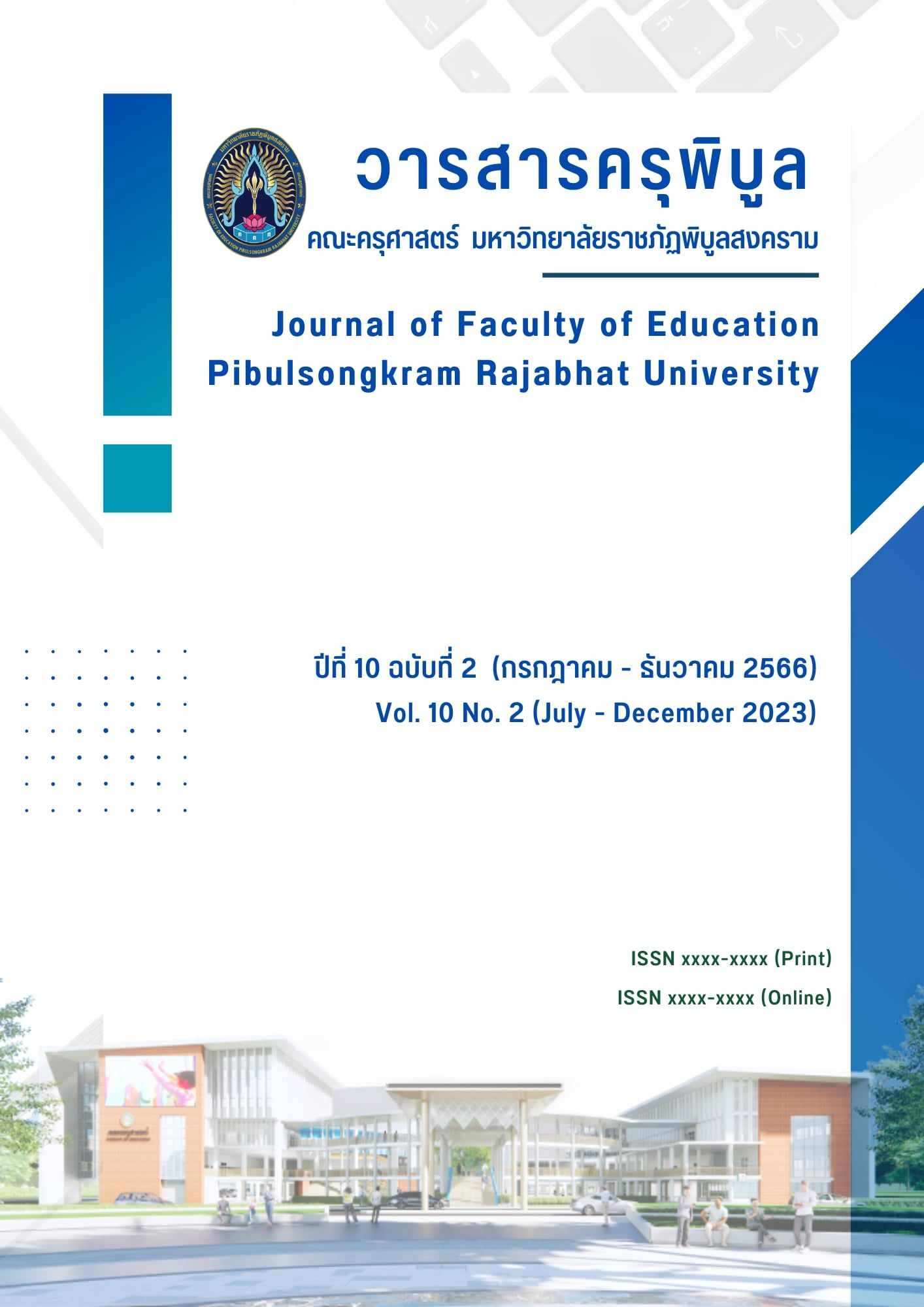The Development of Teaching Prepositions by a Lesson Based on Input Enhancement and Consciousness-raising
DOI:
https://doi.org/10.14456/edupsru.2019.4Keywords:
input enhancement, consciousness-raising, prepositionAbstract
The current study attempted to develop a lesson on prepositions of date and time with limitation to in, on, and at by means of input enhancement and consciousness-raising. The subject of the study was 52 Pibulsongkram Rajabhat University students enrolling in GELN102 English for Learning in academic year 2014. In the process, the students participated in three fifty-minute sessions, one week each, in regular English classes. They were assigned to do a pretest and a posttest related to prepositions of date and time before and after reading five passages with embedded target grammatical features in the form of boldfaced, underlined, and over-sized prepositions together with their phrases. The students also received consciousness-raising in the form of mentioning to the presence of the prepositions in the reading passages. The students were to do a questionnaire concerning the teaching techniques used in the study, input enhancement and consciousness-raising, as well. The results revealed that the students showed significant improvement after undergoing the experiment, and they were satisfied with the teaching techniques.
References
Bunyarat, P. (2010). A study of the effect of input enhancement and consciousness-raising on the acquisition of prepositions of Thai high school students. Master’s Thesis, Department of English Language, Faculty of Humanities and Social Sciences, Naresuan University.
Castro, M. C. S. A. (2013). An analysis of preposition errors of college students. FLLT Conference proceedings by Language Institute of Thammasart University, 2(1), 97-108.
De Santis, P. (2008). Text enhancement and the acquisition of English verbal inflection “-s” by L1 Haitian creole speakers. Applied Language Learning, 18(1-2), 27-49.
Doughty, C. (2001). Cognition underpinnings of focus on form. In P. Robinson (Ed.), Cognition and second language instruction, 206-257. The United Kingdom: Cambridge University Press.
Doughty, C., and Williams, J. (Eds.). (1998). Focus on form in classroom second language acquisition. New York: Cambridge University Press.
Ellis, R. (2002). The study of second language acquisition (9th ed.). China: Oxford University Press.
Estevez, V. C., Gomez, M. G., & Gonzalez, J. A. G. (2010). Identification of the errors regarding prepositions usage in students of the upper intermediate English course from the ELT program at Universidad Industrial de Santander. Spain: Industrial University of Santander.
Hsu, H. H. (2007). Textual input enhancement on the performance of indirect wh-questions in EFL classroom. Learning Conference 2007. Retrieved from http://l07.cgpublisher.com/proposals/744/index_html
Kao, R. (2001). Where have the prepositions gone?: A study of English prepositional verb and input enhancement in instructed SLA. IRAL, 39, 195-215.
Krashen, S. D. and Terrell, T. D. (1983). The natural approach: Language acquisition in the classroom. Oxford: Pergamon Press.
Lasaten, R. C. S. (2014). Analysis of errors in the English writings of teacher education students. Researchers World – Journal of Arts, Science & Commerce, V(4), 92-101.
Lee, S. (2007). Effects of textual enhancement and topic familiarity on Korean EFL students’ reading comprehension and learning of passive form. Language Learning, 57(1), 87-118.
Long, M. H., and Robinson, P. (1998). Focus on form: Theory, research, and practice. In C. Doughty and J. Williams (Eds.), Focus on form in classroom second language acquisition, 15-41. New York: Cambridge University Press.
Main idea practice 3 key, (n.d.). Retrieved from http://www.daltonstate.edu/writing-lab/practice-exercises-for-reading-classes/main _idea_practice_3_key.htm
Padgate, W. (2010). Input enhancement and the acquisition of English prepositions of Thai undergraduate students. Journal of Humanities Naresuan University, 7(3), 47-62.
Rutherford, W. and Sharwood Smith, M. (1985). Consciousness raising and universal grammar. Applied Linguistics, 6(3), 274-282.
Schmidt, R. (1990). The Role of Consciousness in Second Language Learning. Applied
Linguistics, 2, 120-158.
Simard, D. (2009). Differential effects of textual enhancement formats on intake. System, 37(1), 124–135.
Tahaineh, Y. S. (2010). Arab EFL University Students' Errors in the Use of Prepositions. MJAL, 2(1), 76-112.
White, J. (1998). Getting the learners’ attention: A typographical input enhancement study. In C. Doughty and J. Williams (Eds.), Focus on form in classroom second language acquisition, 85-113. New York: Cambridge University Press.




